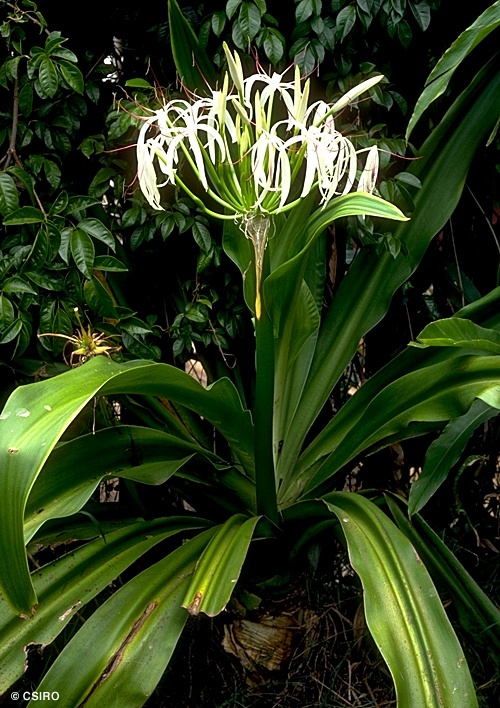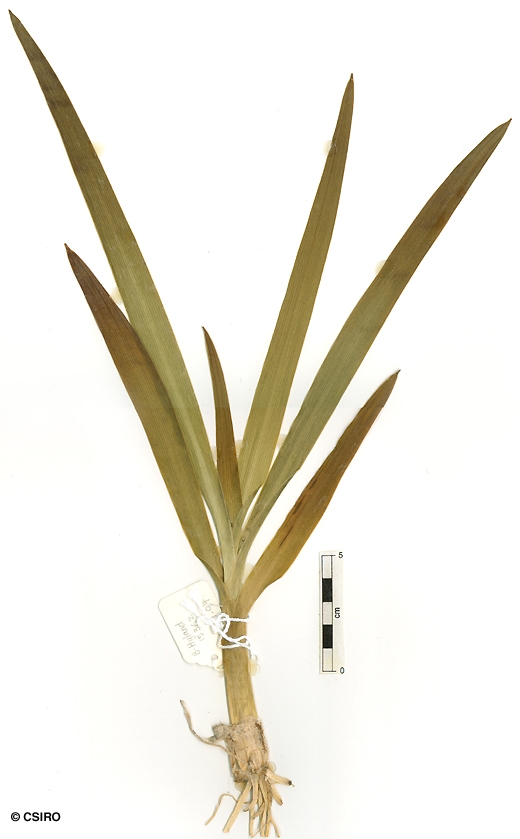Australian Tropical Rainforest Plants - Online edition
Crinum pedunculatum R.Br.




Brown, R. (1810) Prodr. : 297. Type: New South Wales, Port Jackson, R. Brown; holo: BM?.
Crinum Lily; Lily, Crinum; Lily, Spider; River Lily; Spider Lily
Flowers and fruits as a shrub about 1-2 m tall. Stem usually thick and well developed.
Leaf blades about 130-150 x 12-15 cm. Veins longitudinal, about 25-35 per leaf. Petiole absent, base of the leaf clasping the stem.
Peduncle often more than 1 m long. Umbels about 25-flowered. Pedicels about 1.5-5 cm long. Flowers perfumed. Perianth tube green, about 3-12 cm long. Perianth lobes white, about 4-11 cm long. Anther filaments pink, red or purple, about 2.5-6.5 cm long, anthers purple or black, about 10-25 mm long. Ovules pendulous, two per locule. Style about 18 cm long, exceeding the perianth tube.
'Cotyledonary petiole' attached to the seed and the seedling. One cataphyll usually produced before the true leaves. First leaf sessile, leaf blade about 7-26 x 1-2 cm. Venation longitudinal and parallel. Leaf base sheathing the stem. At the tenth leaf stage: leaf blade linear, about 27 x 1.8 cm, venation longitudinal and parallel. Leaf base sheathing the stem, apex acute. Seed germination time 47 to 49 days.
Occurs in NT, CYP, NEQ, CEQ and southwards as far as south-eastern Queensland and south-eastern New South Wales. Altitudinal range quite small being found just above sea level. Usually grows in open situations, in northern Australia it is found in beach forest or monsoon forest close to the sea. Also occurs in New Guinea, other parts of Malesia and the Pacific islands.
This large lily-like plant is already in cultivation in a variety of situations. The large white flowers are produced on a long upright inflorescence. One of the treatments which has been used for the sting of Box jellyfish at Bingil Bay in northern Queensland is to rub crushed material of this plant on the stings. The plant contains an alkaloid, lycorine, which may be responsible for its effect, although it is certainly not claimed to give a complete cure. Cribb (1981).
This plant was once used to produce lures for fishing. The stem or 'lily root' as it was more commonly known was retted and the resultant pale-coloured fibrous material was attached to the line around the hook. When trailed from a moving boat this lure attracted fish such as mackerel.





